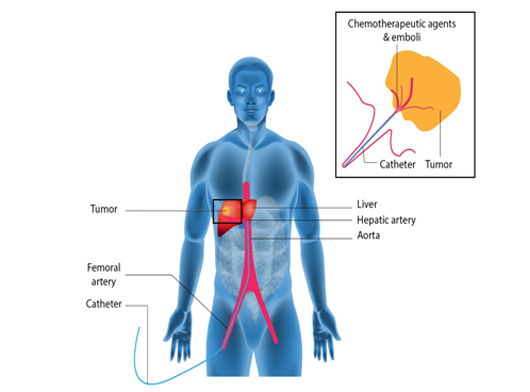- Indication:
- Hepatocellular carcinoma (HCC)
- Colorectal carcinoma.
- Cholangiocarcinoma.
- Palliative treatment for a patient with unresectable HCC or as a bridge to a liver transplant.
- As an additional procedure along with Radiofrequency tumor ablation.
- Procedures: This procedure is done under general anesthesia. A thin catheter (tube) is placed in the groin (Femoral artery). The catheter is then moved until it reaches the hepatic artery in the liver . A radio-opaque dye is injected into the catheter and an x-ray (called an Angiogram) is taken to find the branches of the artery that are feeding the liver tumor. The doctor then moves the catheter to these arteries and injects a material, radio-labeled Lipiodol, into the arteries feeding the tumor. The material blocks these arteries. This traps the chemotherapy drugs inside the tumor after the chemoembolization is done, the doctor pulls the catheter out through the femoral artery. Pressure and ice are placed over the incision to help reduce swelling and stop bleeding.

Trans-Arterial Chemo - Embolization (TACE)
Indications and Procedures

.png)

